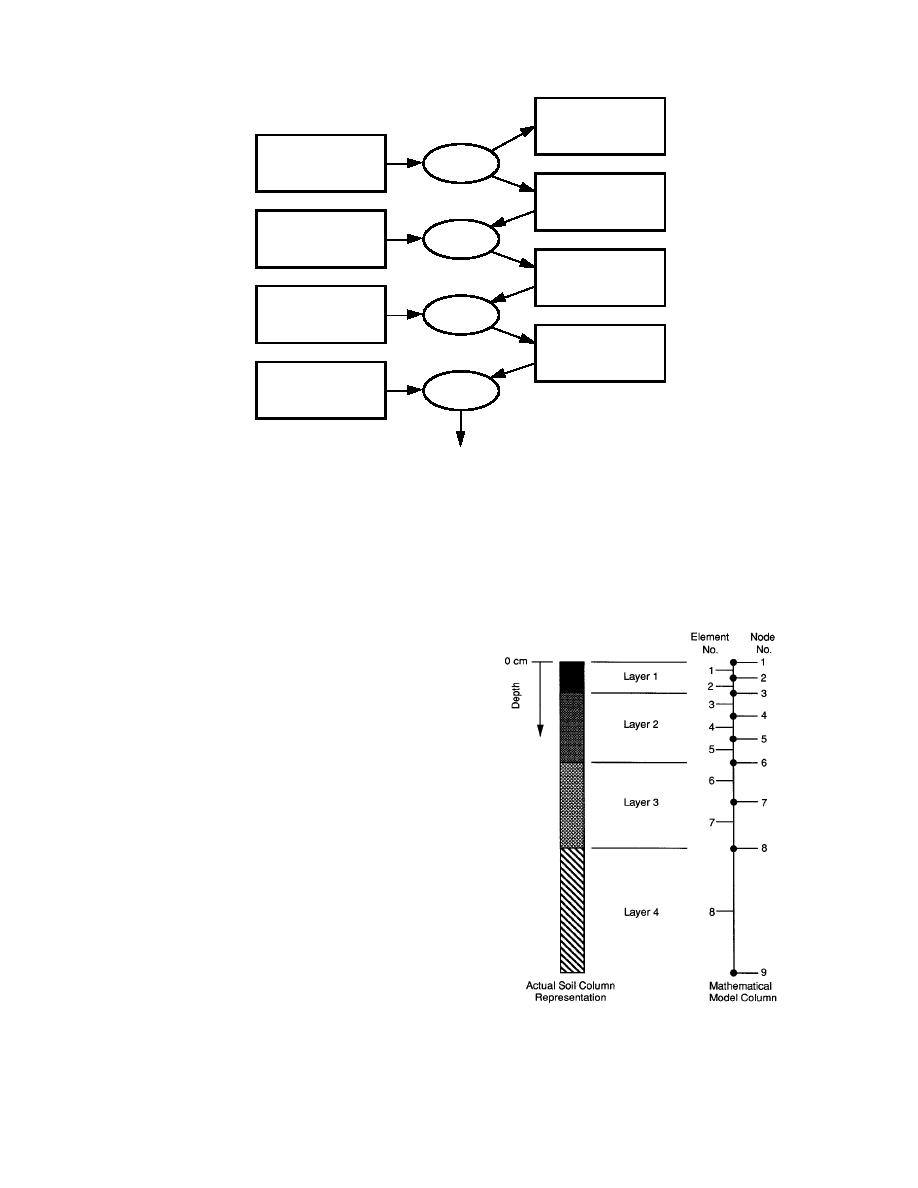
Output/Input
Input
Heave
Frost/thaw Penetration
Initial Conditions
FROST
Boundary Conditions
Material Characteristics
Nodal Temperature,
Moisture & Density
Additional Material
TRANSFORM
Characteristics
Physical and Elastic
Properties of Sublayers
Load Configuration
NELAPAV
Evaluation Locations
Strains; Stresses
Traffic
CUMDAM
PCC Parameters
Cumulative
Damage
Figure 1. Flow chart of mechanistic design procedure.
with time. It also calculates temperature, moisture
mary assumptions, with additional assumptions
stress, water content, ice content, and density
reported in Guymon et al. (1993):
through the depth of the profile at each time incre-
1. Darcy's law applies to moisture movement
ment. FROST was originally developed by Berg
in both saturated and unsaturated conditions.
et al. (1980) in a cooperative study funded by the
Corps of Engineers, the Federal Highway Admin-
istration, and the Federal Aviation Administra-
tion. Additional details beyond those described
here are given in Guymon et al. (1993). The model
assumes one-dimensional vertical heat and mois-
ture flux and is based on a numerical solution
technique termed the nodal domain integration
method. The nodal domain integration method al-
lows use of the same computer program to solve a
problem by either the finite element method, the
integrated finite difference method, or any other
mass lumping numerical method. For this study,
we chose to use the integrated finite difference
computational method.
Figure 2 shows how FROST uses nodes, which
are exact points, to divide the column of material
into horizontal elements. Material properties are
assigned to each element.
The program was developed for use on prob-
Figure 2. Example of pavement profile divided
lems of seasonal freezing and thawing of non-
into finite elements.
plastic soils, and is based on the following pri-
2



 Previous Page
Previous Page
